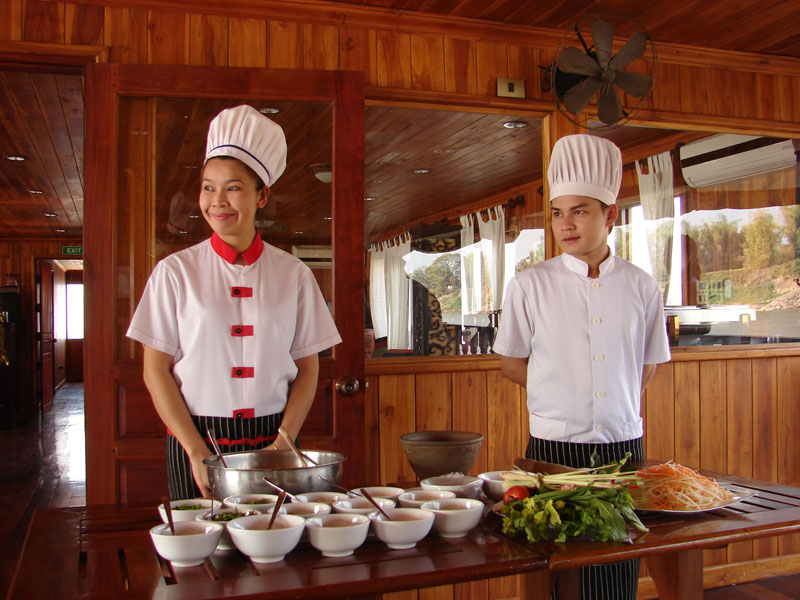What's Cooking in... Laos
This item appears on page 55 of the June 2014 issue.
Most Americans associate the Mekong River with the Vietnam War (or the American War, as it is called in Southeast Asia). After having cruised in Thailand from Nong Khai to Ubon Ratchathani in February ’14, my husband, John, and I now know that the river in that area is serene, with the banks used for growing vegetables.
I never thought I would have a barbecue on a sandbar in the middle of the Mekong River, but one night we did.
Our 8-day cruise cost us $2,400 per person and included all tours. It was aboard the teak-and-mahogany Mekong Explorer of Mekong River Cruises (Luang Prabang, Laos; in North America, call The Cruise Broker in Milton, NY, at 855/702-4986, www.cruisemekong.com).
Our days were divided between cruising and shore trips to fascinating places in Thailand, such as Lotus Lake, Phu Phrabat Historical Park (on the UNESCO World Heritage Sites “Tentative List”), Sala Keoku (Buddha Park) and what was a safe-haven home for Ho Chi Minh, where from 1924 to 1931, sheltered by Vietnamese immigrants, he emerged as a leader of Vietnam’s independence movement.
My favorite day included a longtail boat ride up the Khading River to the Lao village of Ban BagBang. The village had a mix of homes made of wood in the traditional style as well as new, brightly painted, concrete ones. Many homes had satellite dishes, and everyone seemed to have a cell phone.
When we returned to the Mekong Explorer, the chefs Ms. Soyout and Mr. Ning showed us how to make Laap (spicy salad) and Tam Mak Hung (papaya salad).
In the Lao language, “laap” means “luck” or “good fortune.” A signature dish of Laos, laap is served on special occasions, such as weddings or baci ceremonies; a baci can be any special event in a person’s life. The dish is special because it contains meat, which is very expensive for Lao people.
Laap is served cold, making it perfect for celebrations that can last for several days. One such celebration occurs when a baby is born. Friends come to the house of the new parents, eat laap and play a betting card game which can go on for several days. The money won from playing cards goes toward the baby’s future.
4 tbsp glutinous rice
1 three-inch stalk of lemon grass, diced
2 fresh kaffir lime leaves (bay leaves with a little lime zest may be used as a substitute)
10 thinly sliced shallots, divided
1 or 2 garlic cloves, diced
1 lb cooked minced chicken (pork or beef can be substituted)
1 tsp bouillon powder
1 tbsp salt
¼ cup lime juice
½ tbsp chili powder
1 tbsp fish sauce
3 spring onions, cut in one-inch pieces
¼ cup fresh mint leaves
2 tbsp cilantro, coarsely chopped
2 cups Chinese cabbage, cucumbers, long beans and/or any fresh vegetables


